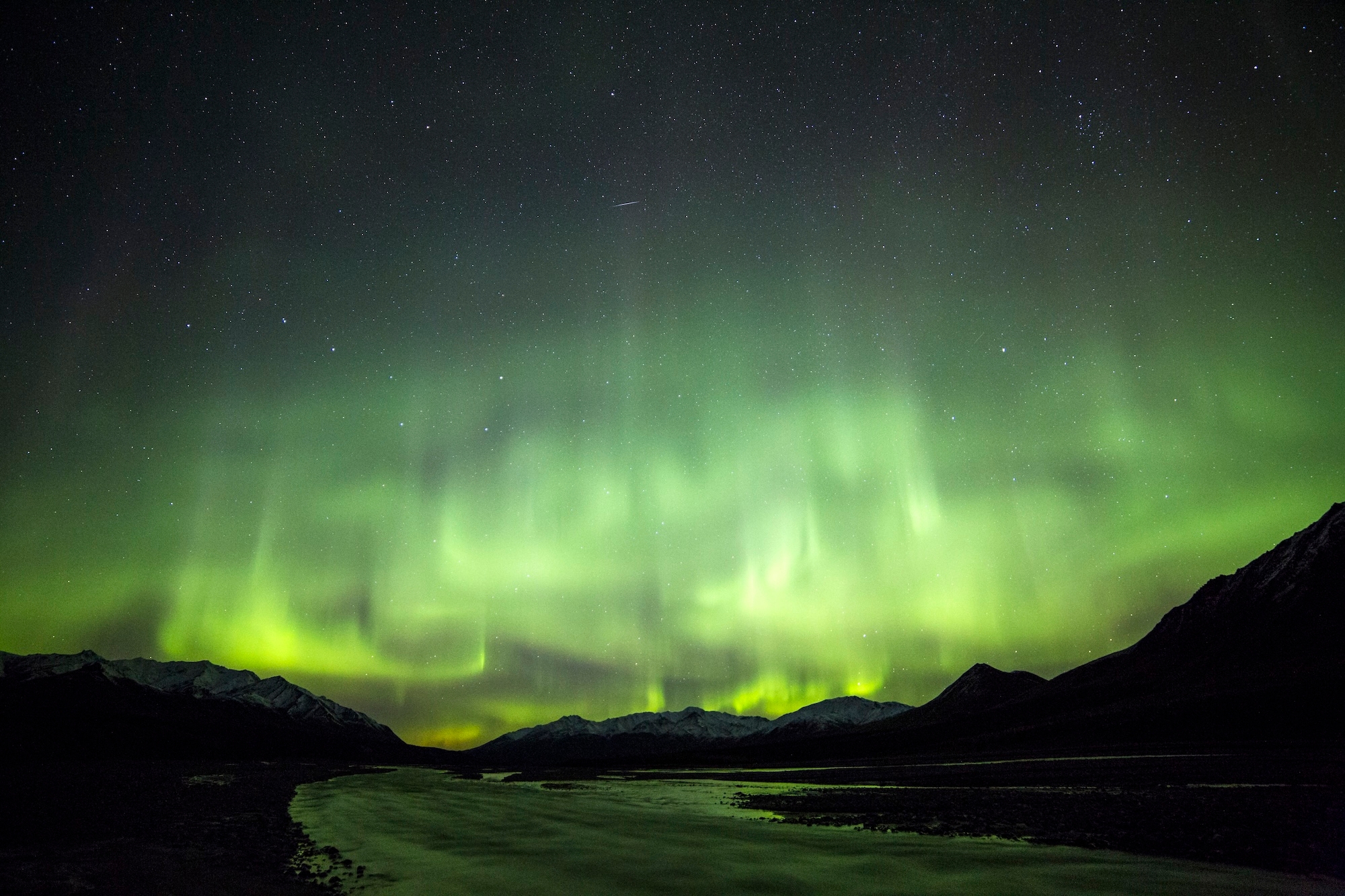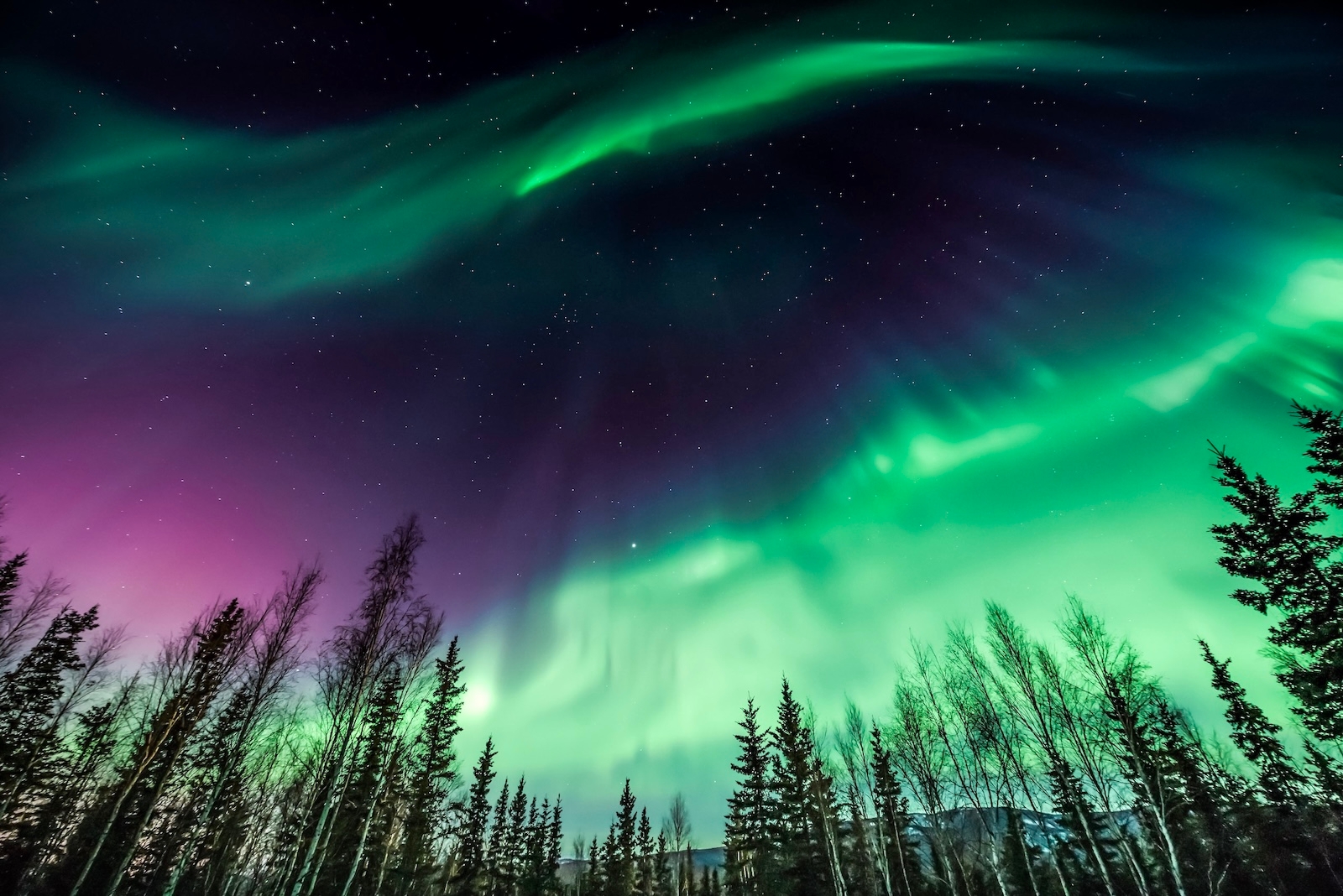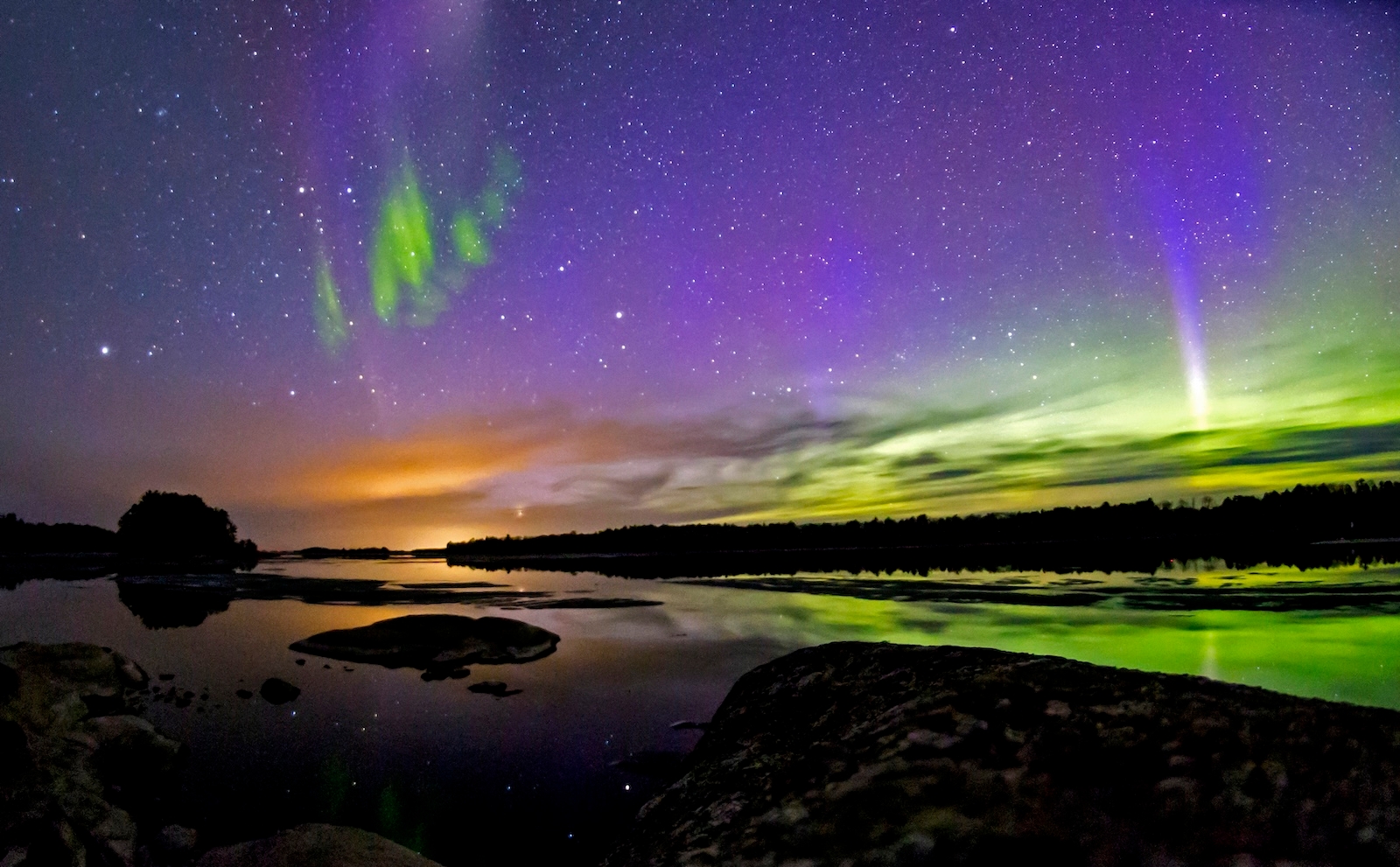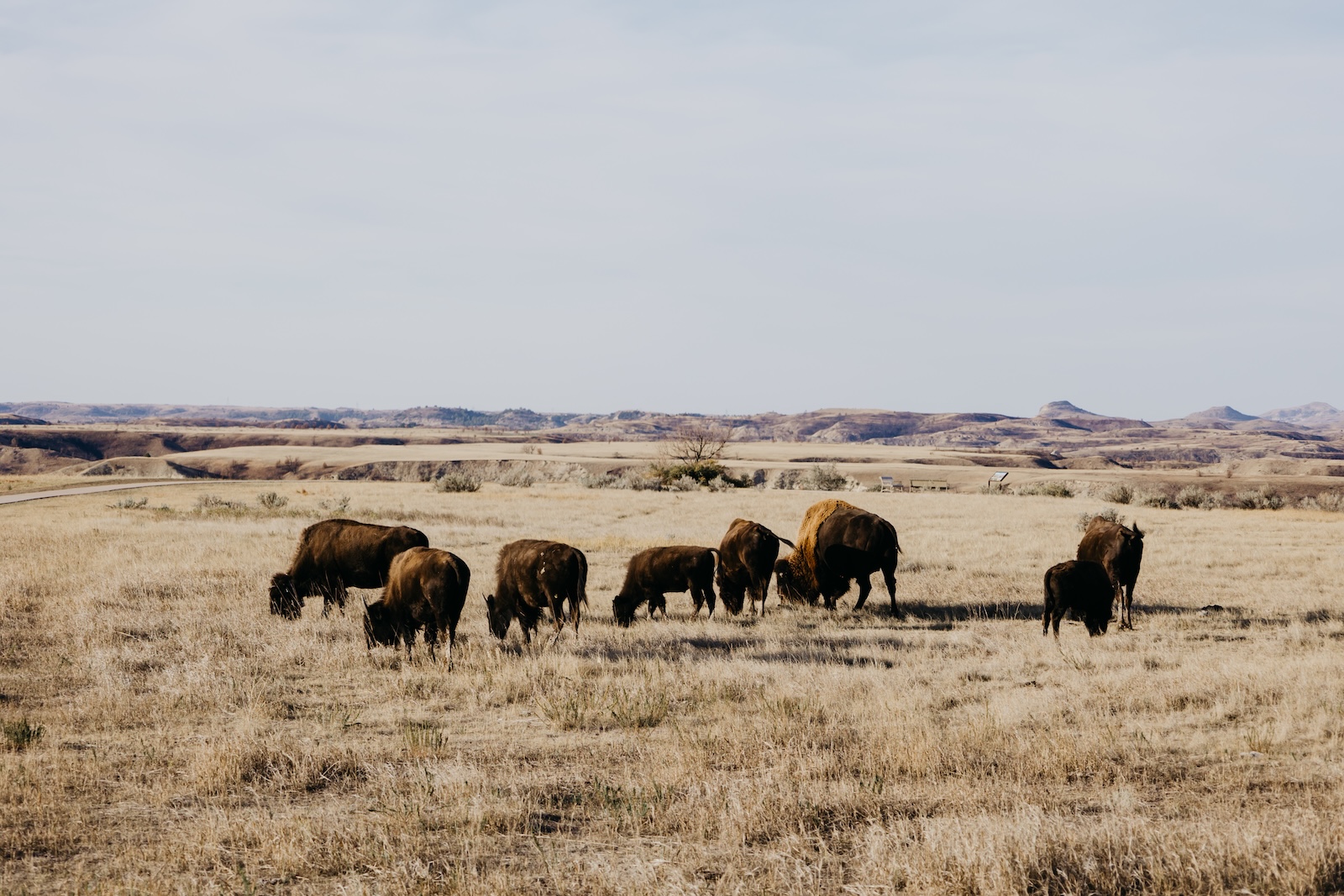The 5 best places to see the Northern Lights in the USA

The Northern Lights, also known as the Aurora Borealis, is one of our planet’s most surreal natural phenomena – a dazzling display of colorful light that dances across the night sky. This show occurs when energized particles from the sun hit the Earth’s upper atmosphere at incredible speeds and are redirected by our planet’s magnetic field.
Your chances of seeing the Northern Lights improve significantly the farther north you travel, but you don’t need to trek all the way to the North Pole to experience them. With careful planning—and a bit of luck—you can spot the aurora in multiple states across the US.
5 Best Places to See the Northern Lights in the USA
1. Fairbanks, Alaska
Why Fairbanks is a top spot for seeing the Northern Lights
Fairbanks, a 2.5 hours’ drive northeast of Alaska’s Denali National Park and Preserve, experiences consistently clear skies due to its distance from the coast. Very few people live this far north, keeping light pollution to a minimum. Fairbanks is also located in what’s known as the auroral oval, a band surrounding the North Pole where auroras are known to occur. Some local tours even offer photography services to help you capture the moment.
The best time to see the Northern Lights in Fairbanks
The Northern Lights viewing season in Fairbanks lasts from late August to mid-April, offering a long window of opportunity. Nights are longest and darkest between September and March, with increased aurora activity in the hours surrounding midnight. Fairbanks’s Aurora Tracker, a useful resource, predicts optimal viewing opportunities across the region.
Places to stay in Fairbanks, Alaska
Auroras can be seen from the back deck of Aurora Viewing Deck, located a 15 minutes’ drive outside Fairbanks.
Skiers appreciate the ski-to-door access at Aurora Ridge Cabin, which also features an outdoor fireplace, patio, and front porch for Northern Lights viewing.
Other things to do in Fairbanks, Alaska
Exhibits at the University of Alaska’s Museum of the North include Alaska Native art and a mummified bison from the Ice Age.
Thaw out from the cold at Chena Hot Springs Resort, whose heated outdoor pools and hot tubs allow you to experience the scenic landscape in style.
At Creamer’s Field, a migratory bird refuge, you can stroll along a network of trails and spot wildlife including geese, swans, moose, and foxes.

2. Voyageurs National Park, Minnesota
Why Voyageurs is a top spot for seeing the Northern Lights
Minnesota’s only national park, located near the Canadian border, is a remote, lake-filled region that’s a five hours’ drive from Minneapolis-St. Paul. In 2020, Voyageurs was designated an International Dark Sky Park in recognition of its exceptionally dark skies and dedication to astro-tourism. In addition to self-guided stargazing, you can join constellation tours and nighttime snowshoe hikes.
The best time to see the Northern Lights in Voyageurs National Park
The best time to view auroras in Voyageurs is between December and March when you can enjoy more hours of darkness. Be sure to scope out a spot where your view isn’t obstructed by trees, such as the Kettle Falls Observation Deck.
Places to stay near Voyageurs National Park
Crane Lake Wilderness Lodge is a three-bedroom waterfront rental featuring a fire pit and a large deck with views of Bear Island.
At Charming Stop Island Cabin, accessible only by boat, you can fish, spot bald eagles, and paddle around Stop Island aboard the owner’s canoe.
Other things to do in Voyageurs National Park
The best way to navigate Voyageurs’ lakes and islands is by boat. You can join ranger-led boat tours or rent a kayak or canoe.
In winter, frequent snowfalls transform Voyageurs into a winter wonderland. When the lakes freeze over, you can try your hand at cross-country skiing, snowmobiling, and even ice-fishing.
Hikers love Blind Ash Bay Trail, a three-mile loop that winds through the boreal forest to scenic overlooks of Kabetogama Lake.

3. Theodore Roosevelt National Park, North Dakota
Why western North Dakota is a top spot for seeing the Northern Lights
You don’t have to worry about obstructed views in Theodore Roosevelt National Park, where open prairies and badlands offer expansive skies perfect for Northern Lights displays. The park is also located more than 30 miles from the nearest city, minimizing light pollution. Best of all, the entrance is open 24 hours a day, allowing you to visit anytime there’s aurora activity.
The best time to see the Northern Lights in Theodore Roosevelt National Park
While auroras appear year-round in North Dakota, winter brings the clearest, darkest skies. Longer nights also provide more opportunities to catch the solar spectacle. Plan your viewing two to three hours after sunset and around midnight, far from light sources.
Places to stay near Theodore Roosevelt National Park
The Maltese Ranch Cabin in Medora is a cozy one-bedroom stay less than a mile from the park’s South Unit Visitor Center.
Also in Medora, the Badlands Suite includes two bedrooms, high-speed WiFi, and access to barbecue facilities and an outdoor dining area.
Other things to do near Theodore Roosevelt National Park
Follow the 36-mile Scenic Loop Drive to see some of the park’s most iconic sights, including bison herds, prairie dog towns, and badlands.
At the park’s restored Maltese Cross Cabin, you can see where Theodore Roosevelt temporarily lived and ranched in the 1880s before becoming America’s 26th president. The small town of Medora offers a taste of Western culture with horseback riding, the North Dakota Cowboy Hall of Fame, and the Medora Musical, which celebrates the American West.

4. Idaho Panhandle National Forests, Idaho
Why northern Idaho is a top spot for seeing the Northern Lights
Nature still dominates Idaho’s Panhandle—a sparsely populated region near the Canadian border—less than an hour’s drive from Spokane. The dark skies above Idaho Panhandle National Forests—a 2.5-million-acre expanse covered by mountains, lakes, and trees—are optimal for aurora viewing. Head to lakeshore beaches to see the lights reflecting on the water’s surface.
The best time to see the Northern Lights in northern Idaho
The Northern Lights can be seen in northern Idaho from September to March, with the best views occurring on the darkest, clearest nights between 22:00 and 02:00. Winter provides the most reliable conditions, especially around the new moon.
Places to stay in northern Idaho
Tucked away in Kootenai National Forest, Peaceful Kootenai Cabin invites rest and relaxation with its furnished patio, gas fireplace, and views of the mountains.
This secluded Coeur d’Alene rental offers a hot tub, gazebo, snowshoes, and a large deck overlooking 40 private acres.
Other things to do in northern Idaho
On wildlife tours in the Idaho Panhandle, you can have chances to spot white-tailed deer, bald eagles, timber wolves, and both black and grizzly bears.
Bike down the Route of the Hiawatha to see old train tunnels and trestles left from the now-defunct Milwaukee Railroad.
5. Katahdin Woods and Waters National Monument, Maine
Why north-central Maine is a top spot for seeing the Northern Lights
Katahdin Woods and Waters National Monument—a 1.5 hours’ drive from Bangor, Maine—is north enough and remote enough for auroras to be visible. The heavily forested area is well protected, providing dark skies so pristine that it earned an International Dark Sky Sanctuary certification in 2020.
The best time to see the Northern Lights in north-central Maine
Winter (December through March) offers the best conditions for seeing the Northern Lights in Maine, with clear nights and minimal light pollution. Aurora sightings are also possible in spring and fall when solar activity is at its peak, though cloud cover can be an issue.
Places to stay in north-central Maine
This three-bedroom Family Friendly Lakefront Cottage in Millinocket is a family and pet-friendly nature retreat with an outdoor fire pit and shallow cove for swimming.
Peaceful Oakfield Cabin offers a wood-burning stove, fireplace, and direct river access including kayaks to use during your stay.
Other things to do in north-central Maine
Popular hiking trails in nearby Baxter State Park include Katahdin Stream Falls and the summit of Mount Katahdin, Maine’s highest peak.
For a challenge, navigate Class V rapids while white-water rafting down the Penobscot River.
Expert tips for planning a Northern Lights trip
1. Use apps and tools to track aurora activity
Timing the appearance of the aurora borealis can be tricky, especially if it only lasts a few minutes or if cloud cover is imminent. Instead of guessing or relying on luck, use expert tools to help.
The Space Weather Prediction Center and apps like Aurora Forecast, Aurora Pro, and Aurora Alerts provide real-time data on geomagnetic activity. Look for a Kp-index of 4 or higher, indicating stronger-than-usual aurora activity.
2. Maximize your viewing chances
After pinpointing a Northern Lights location, your work isn’t done. You still have multiple steps to follow to ensure optimal viewing conditions:
Travel as far from light pollution as possible
Wait for clear skies (cloud cover can block your view)
Plan around a new moon (the full moon’s brightness can interfere)
Find a spot with an unobstructed view of the sky, such as lakeshores or overlooks
3. Be patient
The Northern Lights are a natural phenomenon and are rarely predictable. When the lights appear, they can last anywhere from a few minutes to multiple hours. Lights that may appear weak may also suddenly intensify. The trick is to allow plenty of time to enjoy the experience.
If there’s predicted aurora activity in your area but the sky still appears dark, try taking a photo. Even cell phone cameras in night mode can pick up more light than the naked eye and reveal colors your eyes can’t see.
4. Have backup activities prepared
Even under perfect conditions, luck may not be on your side. Factors like cloud cover, light pollution, a full moon, or low magnetic activity can all prevent sightings. Mother Nature is fickle.
If the lights don’t appear, have a backup plan to make the most of your time. Enjoy a bonfire, visit a local museum with a Northern Lights exhibit, or simply look up and enjoy the stars – a view you wouldn’t normally stay up for.